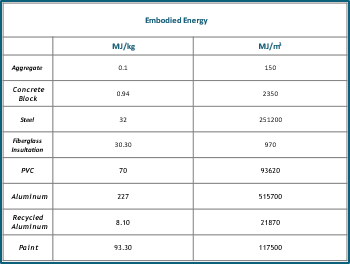Understand the different forms of energy involved the design & construction of a building
When assessing the life cycle of a building, the embodied carbon of the building needs to be evaluated as it plays a crucial role in a range of decisions related to the construction of the building, logistics, and the use of materials involved in the construction process.
The built environment is a major consumer of energy resources and has a significant impact on the natural environment. While embodied energy contributes to generated emissions, the building’s operational energy is also a large consumer of energy. However, the latter can be mitigated through the use of optimal, energy-efficient technology that reduces the operational energy of the building, combined with the use of renewable energy technologies. In contrast, embodied energy requires further examination of the building life cycle and decision-making prior to construction.
The embodied energy consists of the initial embodied energy, which includes the energy required to procure the material and construct the building, and the recurring embodied energy, which is the energy needed to maintain the building during its lifespan. The latter encompasses work done for repairs, refurbishment, and general routine maintenance. From an analytical standpoint, the embodied carbon typically represents around 40% to 45% of the building’s total energy footprint, whereas the operational energy ranges from 55% to 60%. Neglecting the embodied energy of the building can have severe detrimental impacts on the natural environment, including but not limited to biodiversity loss, an increase in greenhouse gases, and overall environmental degradation.
These forms of energy are measured in units of Mega Joules (MJ) or Giga Joules (GJ) per unit of weight (kilogram or tonne) or area (square meter). This simplifies the complex calculation involved when assessing the data on the embodied energy of the building. Regarding High-Performance Buildings, this data is assessed early on and evaluated to ensure that both features of the embodied energy are low. Below is a sample table of materials with their measured embodied energy.
The embodied energy of a sample of materials used in the construction process

Holtzhausen, H. J. (2007). Embodied energy and its impact on architectural decisions. Sustainable Development and Planning, 102, 377-385. Retrieved December 16, 2022, from https://www.witpress.com/Secure/elibrary/papers/SDP07/SDP07036FU1.pdf
Rasmussen, L., & Kwok, A. G. (2017). Addressing Embodied Carbon in High Performance Design. PLEA 2017 EDINBURGH, 1-8. Retrieved December 16, 2022, from https://cpb-us-e1.wpmucdn.com/blogs.uoregon.edu/dist/c/15104/files/2021/03/2017_07-PLEA-Addressing-Embodied-Carbon-.pdf
We work with innovators who face challenges head on & achieve the impossible